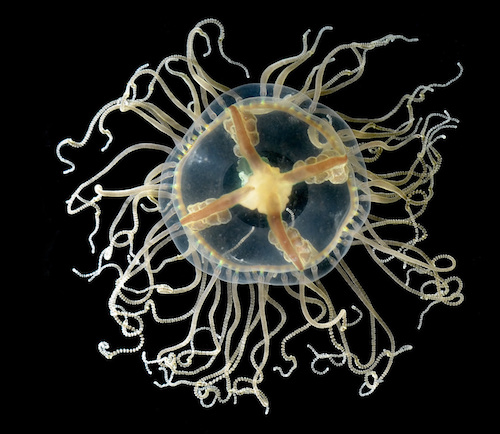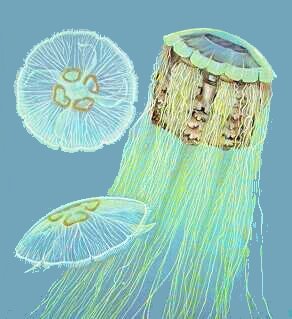June 1, 2018
Clinging Jellyfish - 2018
June 1, 2018

very dangerous
This is a Pacific coast jellyfish that has been spotted along the East Coast for many years, but until recently has been uncommon. It is slightly larger than a quarter, about one inch in diameter. The sting of this jellyfish will send you to the hospital, not just people that are especially sensitive, but anyone. It is found in bays and inlets where it clings to seagrasses, it is not normally found in the open ocean. Your best protection against jellyfish stings is an exposure suit; even a lycra skin is thick enough to block the microscopic stingers.
- Clinging Jellyfish Fact Sheet


